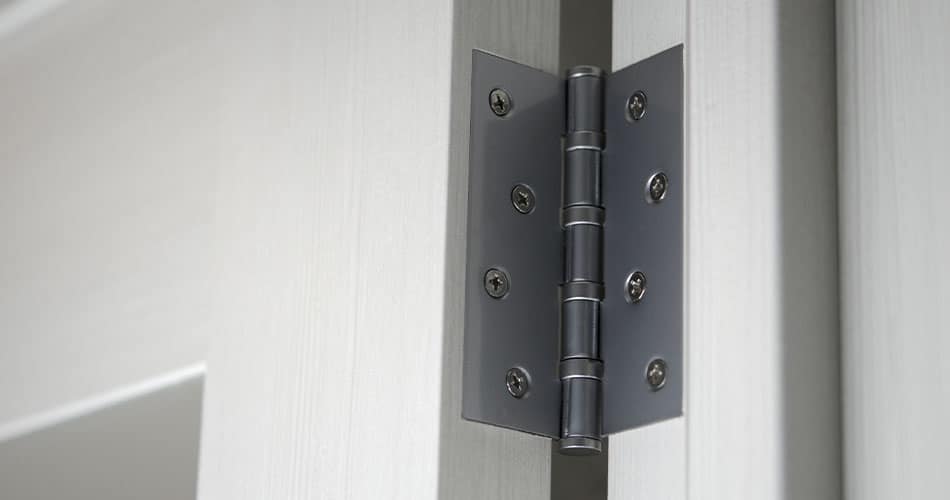By Juan Rodriguez
There are multiple door hinges for every application depending on the type of door that needs the hinge. Hinges provide a flexible point allowing the door to swing in one or two directions and also to support the weight of the door. The immense variety of hinges can determine even the look of your home so one important factor that you will need to consider is how easy is to install. There are certain things that you need to know before buying a hinge, for example, how large, how many of them, where you would like to install it, and if you need any other feature that you would like to have.
Many of the issues related to doors are due in part because of the wrong hinge used, so you might want to understand how to choose the best one without overpaying or overbuilding it.
Hinge Sizes, Materials, And Types
Hinges could either be right or left, but what is the best material to choose from? What is the right size of hinge for my project? One of the factors that drive the hinge selection is whether or not the hinge will be visible or not. The type of hinges is also determined by the doorframe, location of the door and the way the door will swing either towards you or away from you.
Here is the list of most common hinges and the possible applications for each one of them:
• Ball Bearing Hinge – Used mostly on heavy doors. It is permanently lubricated so it will allow a smoother and easier door swing.
• Double Action Spring – Commonly used on kitchen doors and/or dining rooms. It is not recommended on heavy doors and sometimes used in two-way swinging doors.
• Flush Hinge – The most common used on cabinet doors as the hinge is largely concealed. It does not require a recess to be cut and ideal to be used for lightweight doors and small construction.
• Swing and Sway Hinge – The hinge usually found on café-style doors. The way it works provides lateral adjustment to ensure perfect alignment.
• Butt Hinge – Probably the most used one and the most installed one. It is available in different sizes, comes in a variety of sizes between 13mm to 150 mm. Very reliable and strong, and very neat once installed. The rectangular portions of the hinge are installed at the door and the frame and the only visible aspect of it is the pin, used to join both parts together. Most butt hinges are made of steel; however, when installed at exterior doors it shall be made of brass, stainless steel, or aluminum to prevent corrosion.
• Concealed Hinge – This type of hinge could be adjusted once it is installed. Normally is available in two sizes 25mm and 36mm.
• Gate Hinges – Shorter than a regular hinge, these hinges have usually longer leafs.
• Continuous Hinge – Is the type of hinge that distributes the weight of the door over the entire length of the hinge. Available in brass or steel and it is recommended where a long hinge is required.
• Bi-fold Hinges – A hinge that provides multiple pivot points that allow a tighter swing, or that the door could be opened in both directions.
• Heavy Duty Hinges – Are made of various hinge styles used in heavy applications. These hinges could be thicker than the regular hinge and up to ¼” thick.
Hinge Features
Some hinges can offer you extra protection or quality in your project. For instance, the material that the hinge is made of will contribute to preserving the life of the hinge or be corrosion resistant. If installing a hinge on a fire rated door, be sure to verify that the hinge is recommended to be used on Fire Doors. Other hinges are ideal to be used in conjunction with electric locks as they are designed to conduct electricity. Colored hinges also should be considered when the project needs a colored highlight or an accent to your room.
Hinge Installation Tips
When installing a hinge be sure to leave at least 1/8” between the hinge and the edge of the door and/or door frame. If you install the hinge closer to the edge, it might damage your door/frame when screwing into place.
It is recommended to install the hinge approximately 5″ from the top of the door and around 10″ from the bottom. The third hinge should be located at the middle point between the top and bottom hinges.

